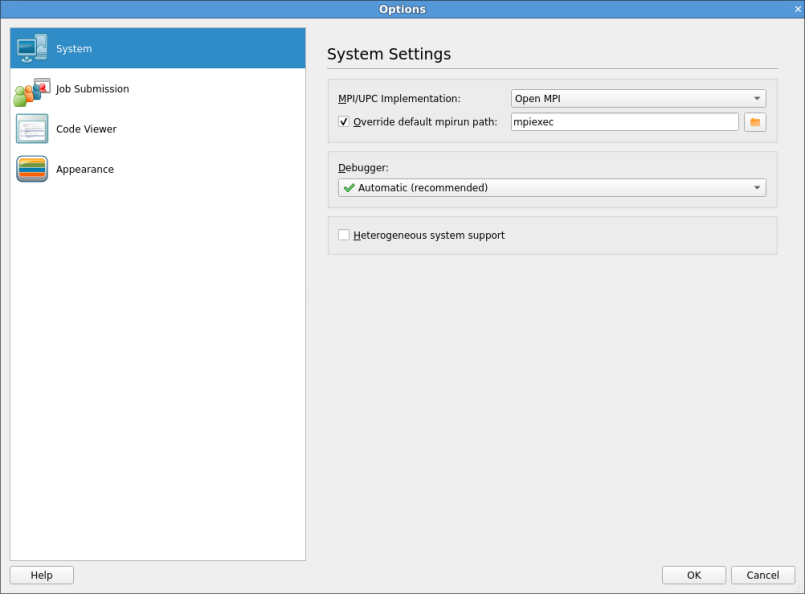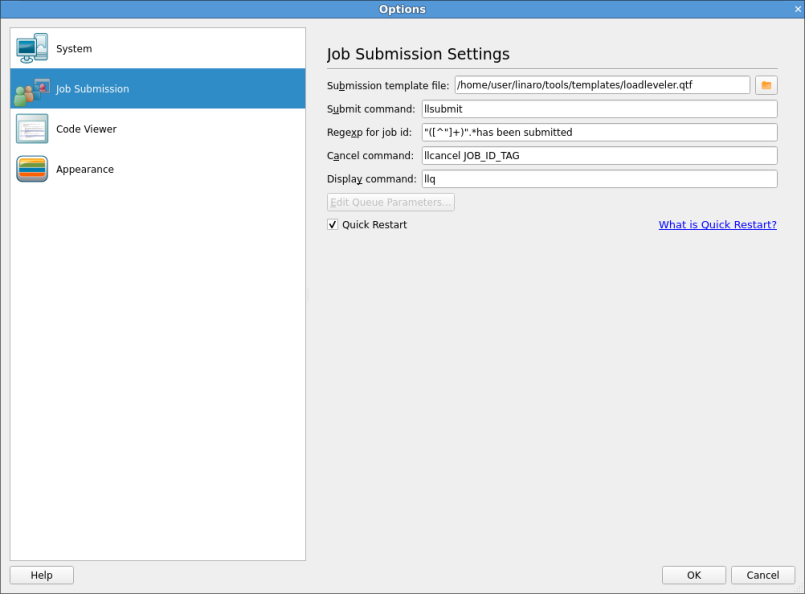Use custom MPI scripts (MAP)
On some systems, a custom mpirun replacement is used to start jobs, such as mpiexec.
MAP typically uses whatever the default for your MPI implementation is,
so for Open MPI it would look for mpirun and not mpiexec, for SLURM it would use
srun, and so on. Here we explain how to configure MAP to use a
custom mpirun command for job startup.
MAP supports two ways that you can use to start jobs using a custom script.
In the first way, you pass all the arguments on the command-line, like this:
mpiexec -n 4 /home/<user>/program/chains.exe /tmp/mydata
There are several key variables in this command that MAP can complete for you:
The number of processes (4 in the above example).
The name of your program (
/home/<user>/program/chains.exe).One or more arguments passed to your program (
/tmp/mydata).
Everything else, like the name of the command and the format of its arguments, remains constant.
To use a command like this in MAP, you adapt the queue submission system described in Start a job in a queue (MAP). For this mpiexec example, the settings are :

As you can see, most of the settings are left blank.
There are some differences between the Submit command in Linaro MAP and what you would type at the command-line:
The number of processes is replaced with
NUM_PROCS_TAG.The name of the program is replaced by the full path to
forge-backend, used by both DDT and MAP.The program arguments are replaced by
PROGRAM_ARGUMENTS_TAG.
Note
It is not necessary to specify the program name here. MAP takes care of that
during its own startup process. The important thing is to make sure your MPI
implementation starts forge-backend instead of your program, but with the same options.
In the second way, you start a job using a custom mpirun replacement with a settings file:
mpiexec -config /home/<user>/myapp.nodespec
Where myfile.nodespec might contain something similar to the following:
comp00 comp01 comp02 comp03 : /home/<user>/program/chains.exe /tmp/mydata
If you specify a template file, Linaro MAP can automatically generate simple
configuration files like this every time you run your program. For the
above example, the template file myfile.template would contain the
following:
comp00 comp01 comp02 comp03 : DDTPATH_TAG/libexec/forge-backend DDT_DEBUGGER_ARGUMENTS_TAG PROGRAM_ARGUMENTS_TAG
This follows the same replacement rules described above and in detail in Integration with queuing systems.
The settings in the Options window for this example might be:

Note Submit command and Submission template file in
particular. Linaro MAP creates a new file and appends it to the submit
command before executing it. In this case what would actually be
executed might be mpiexec -config /tmp/linaro-temp-0112 or similar. Therefore,
any argument like -config must be last on the line, because Linaro MAP will
add a file name to the end of the line. Other arguments, if there are
any, can come first.
Linaro recommend that you read the section on queue submission, because there are many features described there that might be useful to you if your system uses a non-standard start-up command.
If you do use a non-standard command, contact Forge Support.